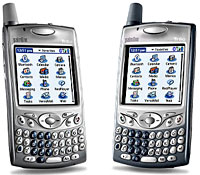 Following on from Part One, published last week.
Following on from Part One, published last week.
The design
As its rivals continue their crash diets and squeeze into ever-smaller designs, there’s no doubt that the Treo’s beginning to look like a bit of a lardy boy these days (although it’s by no means the biggest smartphone out there).
Of course, one of the problems with smartphones is that if you try and shrink them too much, usability flies out of the window.
Smartphones, by definition, need a big bright screen to fit all the information in (and at 320 x 320 pixels, the Treo’s got one of the largest displays around) and there’s a human limit to how small you can make a keyboard.
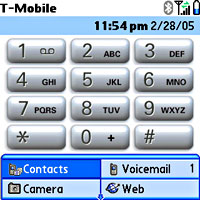 Keyboards. Soft vs hard (ooo-er)
Keyboards. Soft vs hard (ooo-er)
Some smartphone makers have tried to get around this limitation by getting rid of the keyboard altogether and using an onscreen ‘soft’ keyboard instead.
Although this allows designers to make super-small smartphones, the lack of a proper keyboard is – to quote Clint Eastwood – some price to pay for being stylish.
Soft keyboards are absolutely horrible to use. Apart from the fact that your screen rapidly turns into a smudgy mess, they’re simply not as effective as a proper hardware keyboard, and after using both, we’d certainly never again invest in a smartphone without a proper keypad.
Other features
Despite its ‘built for comfort’ shape, the Treo still feels pretty good in the hand, with some of the best ergonomics around – changing the SIM card, for example is an absolute breeze compared to most phones (just use the slide out tray, accessible from the top of the phone), and it’s the same story for the SD card.
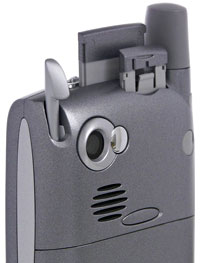 Volume controls are where they should be – on the side of the phone – and muting the phone entirely is simply a case of sliding a switch in the top of the phone, a feature that is inexcusably absent in almost every other phone.
Volume controls are where they should be – on the side of the phone – and muting the phone entirely is simply a case of sliding a switch in the top of the phone, a feature that is inexcusably absent in almost every other phone.
It’s not all good though, with the Palm designers needlessly forcing users to take off the back of the phone whenever a reset is needed.
And then there’s that great, chunky monolith of an antenna that’s bolted on to the phone. Funnily enough, it seems that most Americans actually like antennas on their handsets, but we can’t say we’re too keen.
The phone bit
Of course, pretty looks and bright screens are one thing, but it’s how the thing works as a phone that matters most and here’s where the Treo excels.
When someone new calls you up, a great big button comes onscreen at the end of the call asking you if you want to add the number in your phonebook. Simple. Straightforward. Obvious.
 If you want to switch to the speakerphone during a call, just press the ruddy great onscreen ‘speakerphone’ icon. No holding down keys, no shuffling about in sub-menus or fiddling about with switches like a Windows phone.
If you want to switch to the speakerphone during a call, just press the ruddy great onscreen ‘speakerphone’ icon. No holding down keys, no shuffling about in sub-menus or fiddling about with switches like a Windows phone.
If you want to see who’s called you, just press the green call button twice and a list of calls comes up.
As you scroll down the list, context sensitive buttons appear, asking if you’d like to add the unknown numbers to your contacts, or if you’d like to send a SMS message to known contacts.
Click on a name and it calls them. Click on ‘call log’ and you’ll get a comprehensive listing of every phone call you’ve made, categorised into ‘incoming,’ ‘missed’ and ‘outgoing.’
If you want to find out more, click on ‘details’ and you’ll get the exact time and duration of the call.
 Looking someone up in the address book is just as simple – just type in their initials and you’ll go straight to their entry.
Looking someone up in the address book is just as simple – just type in their initials and you’ll go straight to their entry.
The whole phone is designed for effortless one handed operation, meaning you can use the phone on the move while most Windows Mobile users will be left reaching for their itty-bitty stylus or fiddling about with slide-out keyboards or
Get ’em quick before they go!
Note: since we started this piece, Palm have announced that there will be no further European shipments of Treo 650s as the phone breaches new EU regulations.
However, the company claims that it has already sent enough Treo 650s to meet demand for now, although US users can already indulge themselves with the newly released Treo 700p offering EVDO.
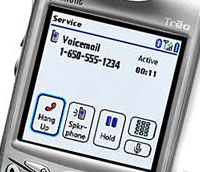 Palm has said that its next Treo smartphone will be targeted at European markets, although it appears that it won’t be a GSM/UTMS version of the 700p.
Palm has said that its next Treo smartphone will be targeted at European markets, although it appears that it won’t be a GSM/UTMS version of the 700p.
Instead, Palm are rumoured to be developing an antenna-less Treo for the European market, possibly to be called the Treo Nitro (thanks to the valued reader who pointed this out to us – you know who you are).
Palm CEO Ed Colligan has suggested that the new model is unlikely to become available until Palm’s 2nd Quarter in FY 2007 (around October – December 2006).
Readers sufficiently enthused by our comments should look on eBay where there are ample new and reconditioned Treo 650’s available for between £170-£280 (that’s where we got ours from!).
Coming up in part three: Palm Treo multimedia and office apps.
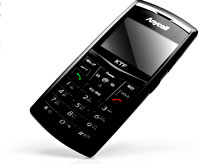 Thinner than a very thin thing on a crash diet, KTF’s new ultra-slim SPH-V9900 looks set to grab the crown as the World’s Thinnest Mobile.
Thinner than a very thin thing on a crash diet, KTF’s new ultra-slim SPH-V9900 looks set to grab the crown as the World’s Thinnest Mobile.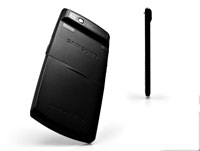 The front of the phone is dominated by a sizeable 1.9″ 262k TFT LCD display, with a familiar keypad design below.
The front of the phone is dominated by a sizeable 1.9″ 262k TFT LCD display, with a familiar keypad design below.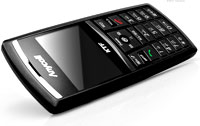 We’re still battling with the Korean translation, but we don’t think there’s any kind of memory expansion on board, which is a bit of a shame (but we guess you can’t have it all with a phone this slim!).
We’re still battling with the Korean translation, but we don’t think there’s any kind of memory expansion on board, which is a bit of a shame (but we guess you can’t have it all with a phone this slim!).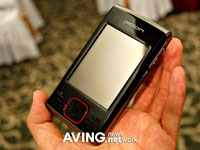 No relation to the fabulous football team known as the Bluebirds, the Korean electronics company Blue Bird have announced their shiny new BM-300 T-DMB Personal Digital Assistant (PDA).
No relation to the fabulous football team known as the Bluebirds, the Korean electronics company Blue Bird have announced their shiny new BM-300 T-DMB Personal Digital Assistant (PDA). Although the 2.8 inch touchscreen TFT-LCD (QVGA) display looks like a bit of a whopper, it can only support a miserly 240 x 320 pixel resolution -a bit of a disappointment for a PDA and hardly likely to enhance the TV watching experience,
Although the 2.8 inch touchscreen TFT-LCD (QVGA) display looks like a bit of a whopper, it can only support a miserly 240 x 320 pixel resolution -a bit of a disappointment for a PDA and hardly likely to enhance the TV watching experience,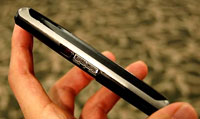 Memory can be further expanded via an SD SDIO card slot.
Memory can be further expanded via an SD SDIO card slot.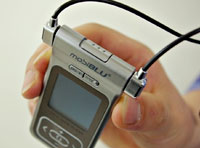 We’re getting very excited by what we’ve seen of mobiBLU’s new ultra, ultra-slim US2 media player.
We’re getting very excited by what we’ve seen of mobiBLU’s new ultra, ultra-slim US2 media player.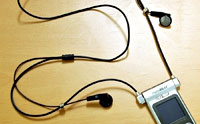 Similarly, we’ve no details about the specifics of the advertised “Audio, Video, Photo support,” but we can guess that it plays back MPEG4 files and can display JPEGs.
Similarly, we’ve no details about the specifics of the advertised “Audio, Video, Photo support,” but we can guess that it plays back MPEG4 files and can display JPEGs. If you’re finding the relentless march of technology to be a little too pacey for your liking, perhaps you might like to seek solace with some reassuringly retro handset attachments for your mobile phone and home PC.
If you’re finding the relentless march of technology to be a little too pacey for your liking, perhaps you might like to seek solace with some reassuringly retro handset attachments for your mobile phone and home PC.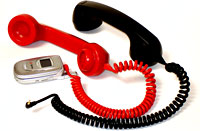 We know they look daft, but let’s be honest – do they look any sillier than a Bluetooth earpiece stuck on your lughole?
We know they look daft, but let’s be honest – do they look any sillier than a Bluetooth earpiece stuck on your lughole?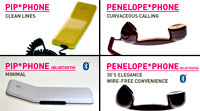 Hulger now offer a range of five retro handsets, two of which come with a cordless Bluetooth configuration.
Hulger now offer a range of five retro handsets, two of which come with a cordless Bluetooth configuration.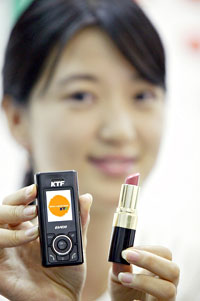 Korean technology company KTF Technologies have unveiled a teensy-weensy phone, which is “smaller then a lipstick.”
Korean technology company KTF Technologies have unveiled a teensy-weensy phone, which is “smaller then a lipstick.”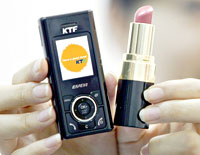 KTF Technologies, are the handset-making subsidiary of Korea’s second biggest wireless carrier, KTF, and the company has said that it intends to market the mini-sized slider, EV-K130 from this week, priced at around 370,000 won (approx £210, €305).
KTF Technologies, are the handset-making subsidiary of Korea’s second biggest wireless carrier, KTF, and the company has said that it intends to market the mini-sized slider, EV-K130 from this week, priced at around 370,000 won (approx £210, €305).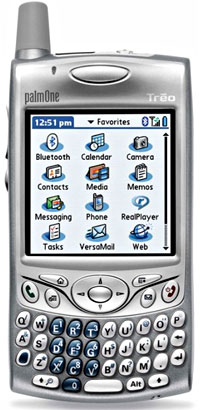 As you know, we *heart* nice, new shiny gadgets and we love to sit on the (sometimes uncomfortable) cutting edge of technology.
As you know, we *heart* nice, new shiny gadgets and we love to sit on the (sometimes uncomfortable) cutting edge of technology. With the Treo just about everything works.
With the Treo just about everything works. 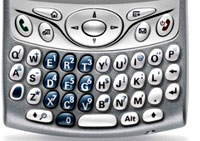 Moreover, the interface is fast and responsive and although Palm’s idea of multi-tasking is simply to close down whatever you’re doing and start up the next program (while remembering all the settings) it doesn’t suffer from the gradual slowdown to a crawl that constantly blighted our Windows experience.
Moreover, the interface is fast and responsive and although Palm’s idea of multi-tasking is simply to close down whatever you’re doing and start up the next program (while remembering all the settings) it doesn’t suffer from the gradual slowdown to a crawl that constantly blighted our Windows experience. Palm Treo 650
Palm Treo 650 Symbian, the smartphone OS company, are pulling a smart move (pun intended) by offering free assistance to Universities and their lecturers to have Symbian programming skills built into courses. Very clever.
Symbian, the smartphone OS company, are pulling a smart move (pun intended) by offering free assistance to Universities and their lecturers to have Symbian programming skills built into courses. Very clever.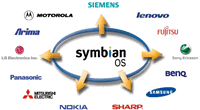 As a sweetener to the lecturers to get involved, Symbian will provide “exposure to Symbian’s industry partners.” Pretty healthy if you fancy running a software development company and want to get exposure for your potential products, or you’re getting a little bored of Uni life and fancy impressing those in industry that you’re a bit of visionary.
As a sweetener to the lecturers to get involved, Symbian will provide “exposure to Symbian’s industry partners.” Pretty healthy if you fancy running a software development company and want to get exposure for your potential products, or you’re getting a little bored of Uni life and fancy impressing those in industry that you’re a bit of visionary.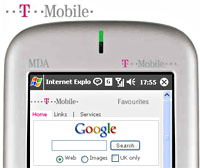 T-Mobile has announced that it is to extend its web’n’walk unlimited mobile Internet access service to include pay-as-you-go customers.
T-Mobile has announced that it is to extend its web’n’walk unlimited mobile Internet access service to include pay-as-you-go customers. All the web’n’walk handsets come pre-configured to connect immediately to the Internet, with customers able browse any web pages they chuffing well like rather than the ‘cut-down’ mobile-optimised web pages available through some services.
All the web’n’walk handsets come pre-configured to connect immediately to the Internet, with customers able browse any web pages they chuffing well like rather than the ‘cut-down’ mobile-optimised web pages available through some services.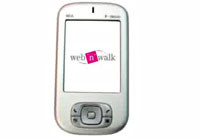 We love it
We love it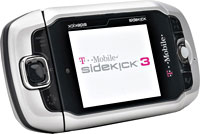 T-Mobile has finally officially announced the T-Mobile Sidekick 3, adding a new trackball controller, Bluetooth and EDGE data to the popular Sidekick 2.
T-Mobile has finally officially announced the T-Mobile Sidekick 3, adding a new trackball controller, Bluetooth and EDGE data to the popular Sidekick 2.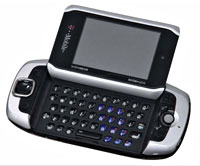 The Sidekick boasts a new 1.3 megapixel camera and assist light, with a large 65k colour, transflective TFT display supporting a rather underwhelming 240×160 pixel resolution.
The Sidekick boasts a new 1.3 megapixel camera and assist light, with a large 65k colour, transflective TFT display supporting a rather underwhelming 240×160 pixel resolution.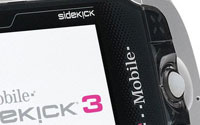 New for version three is a Bluetooth system supporting both the OBEX Push and Headset/Hands Free profiles and a mini-USB port for transferring files from a PC.
New for version three is a Bluetooth system supporting both the OBEX Push and Headset/Hands Free profiles and a mini-USB port for transferring files from a PC.